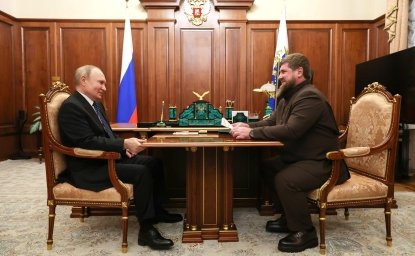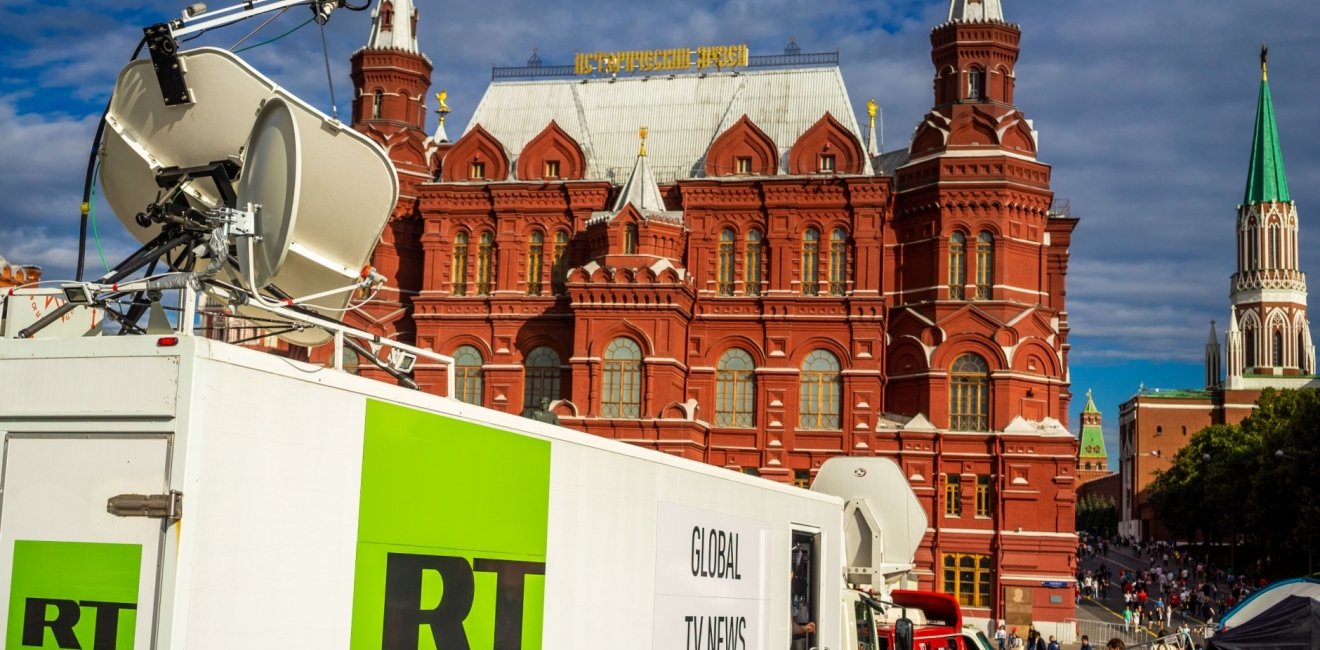
A blog of the Kennan Institute
The United States and Europe continue to grapple with Russian efforts to influence Western elites and democratic processes. In the latest development, U.S. prosecutors charged two Russian nationals with paying a Tennessee-based firm $10 million to “create and distribute content to U.S. audiences with hidden Russian government messaging.” A host of internet domains used in the Russian-directed influence campaign were seized.
Reporters from CNN, BBC, and other outlets have identified the company in question, unnamed in the indictment, as Tenet Media. Operating for nearly a year, Tenet appears to be part of an ecosystem of conservative media resources, based on its list of contributors. The company has published content produced by several prominent conservative political commentators including Tim Pool, Benny Johnson, and Dave Rubin. According to CNN, Tenet’s talent pool has a total of about six million subscribers on YouTube.
Since its public launch, the company has released nearly 2,000 videos, amassing over 16 million views on YouTube alone, the indictment says. The prosecution argues that this operation was funded through a chain of transactions by RT, a Russian state-funded and state-run outlet with a global presence. The production company never disclosed to its contributors or viewers that it was financed and directed by RT, which means that the contributors were involved in the campaign unwittingly.
Russia’s Influence Tactics
The extent to which Tenet’s commentators tweaked their messaging based on guidelines provided from RT-linked handlers remains unclear. It is also uncertain how much influence these videos had on American voters. For the U.S. market, 16 million views is a relatively modest number. However, the operation might have been halted before it reached its full potential.
“There are several key factors to consider” in measuring this campaign’s impact, says Lev Gershenzon, founder and CEO of The True Story, a Berlin-based, propaganda-free news aggregation service, in a conversation with The Russia File. “First, to fully assess the scope of the coverage, we need to account for how the content spreads organically—counting all the reposts that emerged from the initial throw-in. Second, it is likely that the FBI has disclosed only the facts, for which they have solid evidence, meaning there are probably more facts out there,” he said. “Third,” he continued, “in highly polarized societies, an author seeking to influence the political situation does not need tens of millions of views. In the U.S., the outcome of the election may hinge on hundreds of thousands—perhaps even tens of thousands—of votes in swing states.”
On a broader level, the operation uncovered by U.S. authorities offers a glimpse into Russian influence tactics, which are replicated in various campaigns worldwide, including in Africa and Latin America. The Kremlin and its propaganda chiefs have long understood that Russia’s soft power in the West is virtually nonexistent, likely limited to its historical high culture. Yet Moscow continues to rely on its tried-and-true playbook, which includes leveraging local influencers, using controversial media outlets, and exploiting societal divisions.
This approach is on full display in one of the RT internal documents seized by FBI and attached to the current case as evidence. It is RT’s blueprint for a “guerilla media campaign in the U.S.” The Department of Justice has translated the Russian document into English. The “Content of the campaign” paragraph reads, in part: “There is no point of justifying Russia and no one to justify it to. All American politicians and influencers are patriots and supporters of American supremacy.” The paragraph continues: “However,” people in “U.S. political party A [apparently Republican]…are dissatisfied of dramatic decline in the standard of living and large expenditures on offensive policy of the United States in Europe and Ukraine. They are afraid of losing the American way of life and the ‘American Dream.’ It is these sentiments that should be exploited in the course of an information campaign in/for the United States.”
The authors of this document then offer their analysis of the American political landscape. They label “U.S. political party B” (apparently, the Democratic party) as “far-left globalists who advocate for perversion of traditional moral and religious values,” while they portray supporters of “U.S. political party A” (apparently, Republicans) as “normal people whose priority is to preserve traditions of the American way of life.”
Exploiting Divisions
Regardless of the effectiveness of this particular campaign, it reveals Russia’s interpretation of American politics and indicates that it will likely continue to exploit this narrative in future influence operations.
Rather than relying on traditional soft power, which has failed to gain traction in the West, the Kremlin is employing a more subversive strategy. By tapping into preexisting divides within Western societies, especially in highly polarized political environments, Russia can amplify discord and erode trust in democratic institutions without ever needing to justify its own actions. The focus is not on promoting Russia's image but on weakening the cohesion of its geopolitical rivals.
This strategy is not unique to the U.S. In Europe, Russia has used similar tactics to fuel nationalist movements, exploit dissatisfaction with immigration policies, and undermine support for NATO and the European Union. By aligning with far-right and far-left factions in different countries, Moscow tailors its messaging to resonate with localized grievances, all while remaining at arm’s length, often through opaque funding mechanisms and covert media campaigns.
What makes this approach particularly effective is that it does not require massive audiences to succeed. As Gershenzon pointed out, in a closely contested election, swaying even a small percentage of voters in key regions can shift outcomes. The real danger lies in the cumulative effect of such operations: they may not swing every election or influence every decision, but over time, they create an atmosphere of distrust and instability that weakens democratic resilience.
The opinions expressed in this article are those solely of the author and do not reflect the views of the Kennan Institute.
Author

Editor-at-Large, Meduza

Kennan Institute
The Kennan Institute is the premier US center for advanced research on Eurasia and the oldest and largest regional program at the Woodrow Wilson International Center for Scholars. The Kennan Institute is committed to improving American understanding of Russia, Ukraine, Central Asia, the South Caucasus, and the surrounding region through research and exchange. Read more

Explore More in The Russia File
Browse The Russia File
Chechnya as a Model of Modern Russia

Russia’s Indigenous Communities and the War in Ukraine

Gas and Power in a Changing US–Russia Relationship

